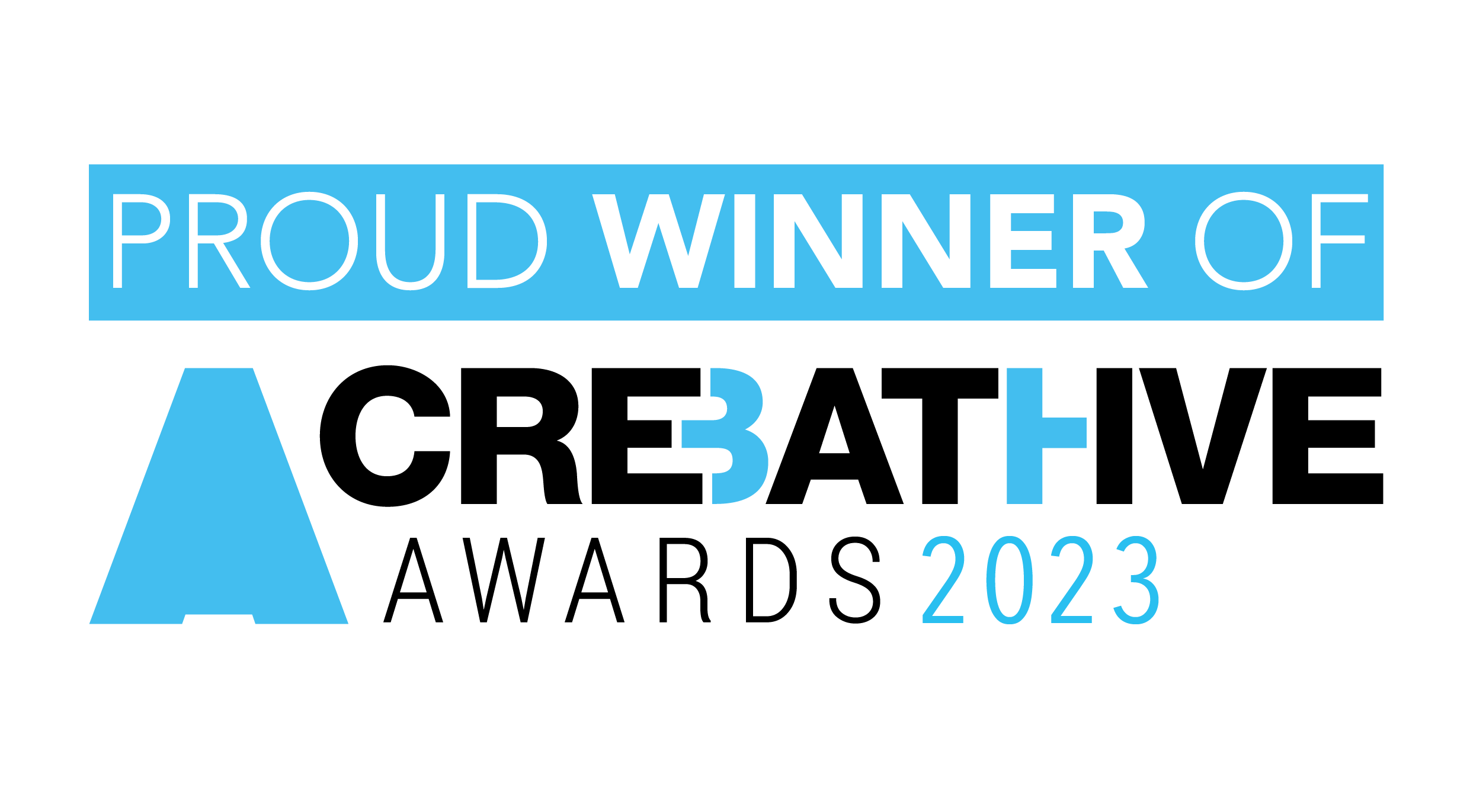Digital Marketing Terminology Guide
Unlock the secrets of digital marketing with our comprehensive A-Z guide to digital marketing terminology
Stay in touch for insights, strategies and news

"Good marketing makes the company look smart. Great marketing makes the customer feel smart."
Joe Chernov
BATH MARKETING AGENCY
Navigating the realm of digital marketing can be overwhelming, especially when faced with an array of specialized terminology and jargon. To help you decode the intricacies of this dynamic field, we've compiled an A-Z glossary encompassing key terms, concepts, and acronyms that are integral to understanding the diverse facets of digital marketing. Whether you're a seasoned marketer, business owner, or aspiring enthusiast, this comprehensive guide will serve as an invaluable resource for unravelling the complexities of digital marketing and expanding your proficiency in this ever-evolving landscape.
Digital Marketing Terms

A
A/B Testing
A method of comparing two versions (A and B) of a webpage, email, or advertisement to determine which one performs better in terms of engagement or conversion rates.
ABM (Account-Based Marketing)
A marketing approach that focuses on targeting and engaging specific, high-value accounts or companies rather than a broad audience.
Ad
Short for advertisement, refers to a promotional message intended to reach and engage a target audience and generate awareness, attract customers, and drive conversions.
Affiliate Marketing
A marketing strategy where other businesses (affiliates) earn a commission for promoting another company’s products or services and driving sales through their marketing efforts.
Alt Text
Descriptive text that is added to an image on a webpage, providing information about the image for visually impaired users or search engines.
App
Short for "application," an app refers to a software program designed to run on mobile devices, such as smartphones or tablets. Apps are typically downloaded and installed on a device to provide specific functionalities or services to users.
ASO (App Store Optimization)
The process of enhancing the visibility and discoverability of a mobile application in the app store search results. ASO involves optimizing various elements, such as the app title, description, keywords, icon, screenshots, and reviews, to improve its ranking and attract more organic downloads.
Assisted Selling
The process in which sales associates or representatives provide personalized assistance and guidance to customers during the purchasing process. This may involve offering product recommendations, addressing customer queries, and providing tailored solutions to meet individual needs.
Analytics
Encompasses the process of collecting, processing, and analysing data to derive insights and make informed decisions, particularly in the context of business, marketing, or website performance.
AOV (Average Order Value)
Average order value is a metric that calculates the average amount of money spent by customers in a single transaction.
B
Backlink
A hyperlink on one website that directs users to another website.
Blackhat SEO
Marketing tactics used to rank a website that violates search engine guidelines.
Blog
An online platform or webpage where businesses can regularly publish content to inform their audience about industry or business updates or trending topics.
Brand
The overall identity and perception of a company, product, or service represented by a distinctive name, visual identity, and written identity.
Brand Awareness
Represents the extent to which consumers are aware of a brand’s existence, values, products, and overall reputation.
Brand Equity
A marketing term that describes a brand’s value, determined by consumers' perception of and experiences with the brand. If people think highly of a brand, it has positive brand equity.
Broken Link
A hyperlink on a website that no longer exists or is inaccessible.
Buyer Persona
A fictional representation of a business' target customer based on market research and data to help understand the needs of their target audience.
Bounce Rate
The percentage of website visitors who navigate away from a site after viewing only one page, often used as a measure of user engagement.
B2B (Business-to-Business)
The exchange of products, services, or information between businesses rather than between businesses and consumers.
B2C (Business-to-Consumer)
The exchange of products, services, or information between businesses and consumers.
BI (Business Intelligence)
Refers to the use of software and services to transform data into actionable insights that inform an organization's strategic and tactical business decisions.

Photo by Rudy Issa
C
Call to Action (CTA)
A specific instruction or prompt to encourage the audience to take a desired action, such as "Buy Now," "Subscribe," or "Learn More."
Campaign
A series of marketing strategies using various digital marketing channels and tactics aimed at achieving specific objectives and target audiences.
Click-Through Rate (CTR)
The percentage of people who click on a specific link or advertisement compared to the total number of impressions it receives, used to measure the effectiveness of online campaigns.
Competitor Analysis
The process of evaluating and analysing the strengths, weaknesses and performance of competitors to identify opportunities within your own business and marketing strategy.
Content Marketing
A marketing approach focused on creating and sharing valuable content to attract and engage a target audience.
Conversion Rate
The percentage of visitors or users who complete a desired action, such as making a purchase, filling out a form, or subscribing, in comparison to the total number of visitors or users.
Crawler
Also known as a spider. A program used by search engines to browse, analyse, and collect data from web pages in order to index them.
Customer Acquisition
The process of attracting and converting new customers through various online channels and strategies.
CAC (Customer Acquisition Cost)
The cost incurred by a business to acquire a new customer, including marketing expenses, sales efforts, and other related costs. It is calculated by dividing the total acquisition costs by the number of customers acquired during a specific period.
Customer Relationship Management (CRM)
A strategy used to manage and analyse interactions and relationships with customers throughout the customer lifecycle to improve customer satisfaction and retention.
Customer Retention
A metric that businesses use to measure customer loyalty over time.
CPC (Cost-Per-Click)
The amount an advertiser pays each time their ad is clicked in a pay-per-click advertising campaign.
CRO (Conversion Rate Optimization)
The process of improving the conversion rate of a website or marketing campaign through data analysis and testing.
Churn
In business, churn refers to the rate at which customers stop doing business with a company or stop using its services over a given period. It is commonly used in the context of subscription-based services to measure customer attrition or loss.
Cannibalization
A situation where multiple pages within a website are competing for the same or very similar search queries, causing them to potentially compete against each other in search engine results, leading to a dilution of ranking and traffic.
Cart Abandonment
The term refers to the phenomenon where online shoppers add items to their virtual shopping carts but leave the website without completing the purchase. This behavior represents lost potential sales and is a key concern for e-commerce businesses.
Crawl Budget
Crawl budget refers to the number of pages search engines will crawl on a website within a given timeframe. It is influenced by various factors, including the site's authority, quality, and server performance, and can impact how efficiently search engines discover and index new content on the site.
D
Demographics
Statistical data that describes the characteristics of a population or target audience, such as age, gender, income, education, occupation, and location.
Digital Marketing
Marketing efforts conducted through digital channels, such as websites, search engines, social media, email, mobile apps, and online advertising.
Direct Mail
Marketing materials, such as letters, postcards, or brochures, that are sent directly to a targeted audience via traditional mail services.
Directory
An online platform or website that lists and organises businesses to increase brand exposure and the number of backlinks.
Drip Campaign
A series of automated marketing messages or emails that are sent to subscribers or leads over a period of time, often used to nurture relationships and drive conversions.
D2C (Direct-to-Consumer)
The business model where companies sell their products or services directly to consumers without involving intermediaries or retailers.
Dropshipping
A retail fulfilment method where a store doesn't keep the products it sells in stock. Instead, when a store sells a product, it purchases the item from a third party and has it shipped directly to the customer.
E
E-Commerce
Stands for Electronic Commerce and refers to the process of buying and selling goods and services online.
Email Marketing
The use of email to communicate and engage with a target audience to promote products, deliver personalised content, nurture leads, etc.
Engagement
The level of interaction, involvement, or attention that an audience has with a brand or its marketing content, often measured by metrics such as likes, comments, shares, or time spent on a webpage.
E-WOM (Electronic Word-of-Mouth)
Sharing opinions, recommendations, or experiences about a brand through online platforms, such as social media, review sites, forums, etc.
Evergreen Content
Search-optimised content that is always relevant and stays "fresh" for readers over a long period of time.

Photo by Joshua Sortino
F
Frequency
The number of times an advertisement is presented to a target audience within a specific timeframe.
Funnel
The journey that a user goes through from initial awareness to the desired action (conversion), represented as a funnel shape and divided into stages like awareness, consideration, and conversion.
G
Geotargeting
A marketing technique that delivers tailored content or advertisements to individuals based on their geographic location or proximity to a specific area.
GIF (Graphics Interchange Format)
A small image file that most people use to create animated images to share on social media.
Gamification
The process of integrating game-like elements, such as point scoring, competition, and rewards, into non-game contexts, such as marketing, learning, or customer engagement, to enhance user participation and motivation.
H
Hashtag
A word or phrase that starts with the "#" symbol (e.g., #milkandtweed) used on social media to categorise content around a specific topic, often used to increase brand exposure.
H Tag (Header Tag)
HTML tags used to set apart headings and subheadings from the rest of the content on a webpage which helps with SEO.
Heatmap
Visual representations of data that display the areas of a website or web page where users interact the most.
Hyperlink
A link that can be displayed as an icon, graphic, or simply text that links to another file, object, or website page.
I
Impression
The number of times a form of digital media is displayed on a user's screen, regardless of whether it was clicked or not.
Indexing
The process by which search engines (like Google) analyse and crawl web pages or content in order to include them in their search results and database.
Influencer Marketing
A strategy that involves partnering with relevant influential individuals or content creators to promote a product, service, or brand to their audience.
Interactive Content
Content that actively engages and involves the audience, encouraging them to interact and participate rather than just consume.
Inbound Marketing
A marketing methodology that focuses on attracting customers through valuable content and experiences, rather than interruptive advertising.
J
Journey Mapping
A visual representation that shows how customers experience a product or service and how they feel along the way.
Just-in-Time (JIT) Marketing
A marketing strategy that aims to deliver targeted content to consumers at the precise moment they need it.
K
Key Performance Indicator (KPI)
A measurable value or metric that indicates the performance or success of a marketing campaign, strategy, or objective.
Keyword Research
The process of identifying and analysing the keywords and phrases that people use in search engines when seeking information about a specific product or service.

Photo by Graphic Node
R
Redirects
URLs or links used to direct you to another location.
Referral Marketing
A marketing strategy that encourages customers to recommend their services, products, or experiences to other people to gain new leads.
ROI (Return on Investment)
A way to measure the profitability or effectiveness of a marketing campaign relative to how much it cost.
Rebrand
The process of changing the branding elements and identity of a company to alter the way the company is perceived.
Retargeting
A marketing strategy that involves displaying targeted advertisements to users who have previously visited a website or shown interest in a product or service.
Robots.txt
A text file located in the root directory of a website that provides instructions to web robots or "crawlers" from search engines on how to crawl and index the website's pages. It can be used to block certain areas of the site from being crawled or to direct search engine bots to specific pages.
Rich Snippets
Rich snippets are enhanced search results that provide additional information, such as ratings, reviews, and images, to help users quickly find the most relevant content.
S
SEM (Search Engine Marketing)
A form of online advertising that aims to increase visibility and traffic to websites through paid search engine results.
SERP (Search Engine Results Page)
The page displayed by a search engine that shows the results of a user's search query.
Shareable Content
Content that is designed to be easily shared by users on social media platforms, increasing its reach and potential for virality.
Social Media Marketing (SMM)
The use of social media platforms to promote products, services, or brands and engage with customers.
Social Proof
The influence and validation that is created when people see others engaging with a product or service, often in the form of testimonials, reviews, or social media mentions.
SEO (Search Engine Optimization)
The process of optimizing a website or web page to improve its visibility and rankings in search engine results.
SaaS (Software as a Service)
Refers to a software distribution model in which applications are hosted by a third-party provider and made available to customers over the internet, typically on a subscription basis.
SMART Objectives
Objectives are specific, measurable, achievable, relevant, and time-bound goals or targets that are used in various business contexts to guide and evaluate performance and progress.
Structured Data
Structured data is a standardized format for providing information about a webpage's content, enabling search engines to better understand and categorize the information.
T
Target Audience
The specific group of people that a marketing campaign or message is intended to reach and resonate with.
Technical Audit
An in-depth review and analysis of a website's technical infrastructure, including factors such as site speed, server configuration, code quality, mobile responsiveness, URL structure, and other technical elements. This process aims to identify and address any issues that may affect the website's performance, user experience, and search engine visibility.
U
Unique Selling Proposition (USP)
The unique feature or benefit that sets a product or service apart from its competitors and makes it appealing to customers.
User Experience (UX)
The overall experience that a user has when interacting with a website, application, or other digital product.
User-generated Content (UGC)
Content that is created and shared by users of a product or service, such as reviews, testimonials, or social media posts.
User Interface (UI)
The visual elements and design of a website, application, or digital product that users interact with.
User Journey
The path that a user takes when navigating through a website or app, encompassing their interactions and experiences along the way.
V
Viral Marketing
A marketing technique that spreads rapidly and organically through social sharing and word-of-mouth, often through the use of captivating or entertaining content.

Photo by Stanislav Ivanitskiy
W
Web Analytics
The collection and analysis of data related to website usage and performance, such as traffic, conversion rates, and user behaviour.
Website Conversion
The action taken by a user on a website that fulfils a desired goal or objective, such as making a purchase or submitting a contact form.
White Hat SEO
Ethical and legitimate techniques used to improve search engine rankings and optimize a website's visibility, in compliance with search engine guidelines.
Widgets
Small applications or tools that can be embedded into websites to provide specific functionality or content.
Wireframe
A visual representation or blueprint of the structure and layout of a website or application, used to plan and organize content and features.
Word-of-Mouth Marketing
The organic spreading of information about a product, service, or brand through personal recommendations or conversations.
X
XML Sitemap
A file that lists all the URLs of a website and provides metadata about each page, helping search engines crawl and index the site more effectively.
We hope that this A-Z guide has provided you with a solid foundation of digital marketing terminology. By familiarizing yourself with these terms, you can navigate the ever-evolving landscape of digital marketing with confidence and make informed decisions for your business. Remember, staying updated on industry trends and best practices is crucial for staying ahead of the competition and driving meaningful results. Whether you're optimizing your website for search engines or leveraging social media to engage with your audience, a strong understanding of digital marketing terminology is the first step towards success.
"Your brand is what other people say about you when you're not in the room."
Jeff Bezos
Ready to embark on an exciting marketing partnership? Contact our boutique UK Marketing Agency here, and let us be your partner in achieving remarkable digital success!
FAQ
What is SEO?
SEO stands for Search Engine Optimization. It refers to the practice of optimizing a website to improve its visibility and ranking on search engine results pages (SERPs).
What are keywords?
Keywords are specific words or phrases that users enter into search engines when looking for information. They are important in SEO as they help search engines understand the content and context of a webpage.
What is a SERP?
SERP stands for Search Engine Results Page. It is the page displayed by search engines in response to a user's search query. It includes a list of relevant websites, ads, and other search results.
What is organic traffic?
Organic traffic refers to the visitors who land on your website through non-paid search engine results. It is driven by SEO efforts and can be an indicator of the website's visibility and relevance.
What is a backlink?
A backlink is a link from one website to another. It is an important factor in SEO as search engines consider backlinks as votes of confidence for a website's credibility and authority.
What is a meta tag?
A meta tag is an HTML element that provides information about a webpage to search engines. It includes metadata such as the page title, description, and keywords, which can impact how the page appears in search results.
What is a rich snippet?
A rich snippet is an enhanced search result that provides additional information beyond the typical title and description. It may include images, ratings, reviews, pricing, and other structured data, making it more visually appealing and informative.
What is structured data?
Structured data is a way of organizing and marking up website content using specific code formats like JSON-LD or Microdata. It helps search engines understand the context and meaning of the content, potentially leading to rich snippets and other enhanced search results.
What is a meta description?
A meta description is a brief summary of a webpage's content that appears below the title in search engine results. It should accurately describe the page's content to entice users to click through to the website.
How long does it take to see SEO results?
The timeframe for seeing SEO results varies depending on various factors like website age, competition, and the level of optimization. Generally, it takes several months to see significant improvements in organic rankings and traffic.
Are social media signals important for SEO?
While social media signals (likes, shares, comments) do not directly impact organic rankings, they can indirectly influence SEO by increasing brand visibility, driving traffic, and generating backlinks.
What is mobile optimization?
Mobile optimization refers to the process of ensuring that a website displays properly on mobile devices and provides a seamless user experience. With the growing use of smartphones, mobile optimization is crucial for SEO as search engines prioritize mobile-friendly websites.
What are crawlability and indexability?
Crawlability refers to how easily search engine bots can access and navigate a website's pages. Indexability refers to whether search engines can include those pages in their index. Both factors are important for ensuring that your website's content can be discovered by search engines.
What is a sitemap?
A sitemap is a file that lists all the pages on a website to help search engines understand its structure and easily crawl and index its content. It is typically submitted to search engines to ensure all pages are discovered.
How can I improve my website's loading speed?
To improve website loading speed, you can optimize images and other media files, enable browser caching, minify CSS and JavaScript files, use a content delivery network (CDN), and choose a reliable hosting provider.
Industry recognition and awards:


